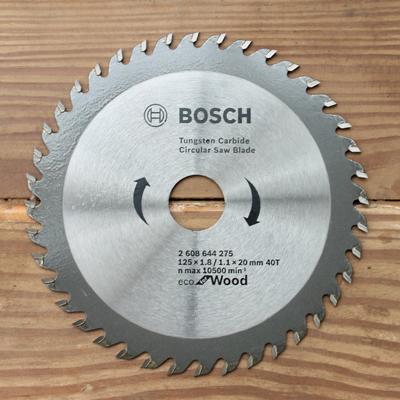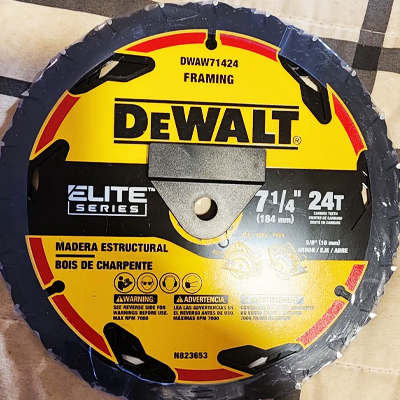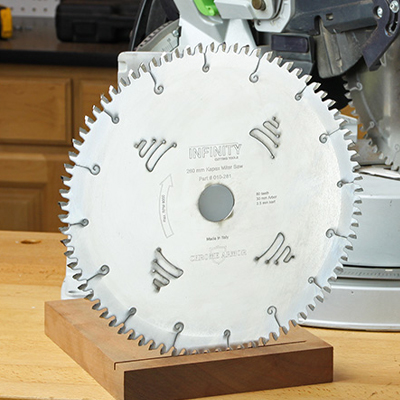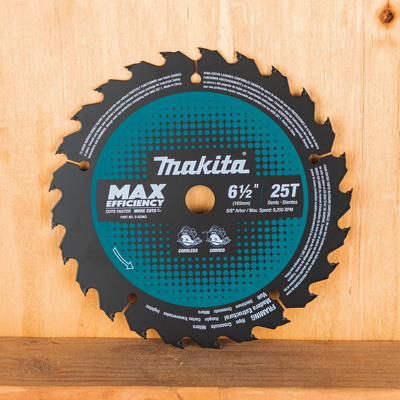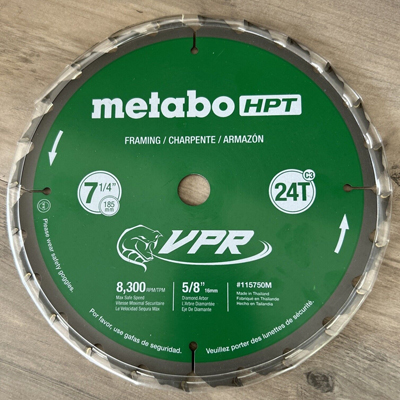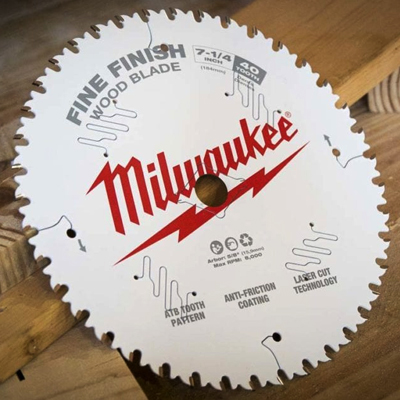Find the Best Saw Blades
A saw blade is a versatile and essential tool in woodworking, construction, and various other industries. It is a circular or sometimes multi-edged cutting implement with sharp teeth or abrasive edges design to effortlessly slice through a wide range of materials, including wood, metal, plastic, and more. Find the Best Saw Blades. These blades come in various sizes, shapes, and configurations, each tailored to specific cutting tasks. In woodworking, circular saw blades are indispensable for tasks like crosscutting, ripping, and making precise mitre cuts. They are engineered with a varying number of teeth, tooth shapes, and tooth configurations, allowing woodworkers to achieve smooth, clean cuts in different wood types and thicknesses. Thin-kerf blades reduce material waste, while dado blades create grooves and joints for precise joinery work. When embarking on the journey of purchasing a saw blade, whether you're a professional tradesperson or a DIY enthusiast, it's essential to consider several crucial factors to ensure you make an informed and practical choice. Saw blades come in a dizzying array of sizes, types, and configurations, each tailored to specific cutting applications, so understanding your specific needs is paramount.Brands
DEWALT Saw Blades:
DEWALT is a household name in the power tool industry, and its saw blades are design for both professionals and DIY enthusiasts. Offers a diverse range of saw blades suitable for cutting wood, metal, and masonry. Their blades are known for their durability and innovative tooth designs, providing efficient cutting performance in various materials.Makita Saw Blades:
Makita is a well-respected name in the power tool industry, and its saw blades are design to work seamlessly with Makita saws. Offers a range of saw blades for cutting wood, metal, and more. Their blades are known for their sharpness and precision, ensuring clean and accurate cuts. Makita provides various blade profiles to suit different cutting tasks.IRWIN Saw Blades:
IRWIN, a trusted brand of hand and power tools, offers a wide selection of saw blades suitable for various applications. Saw blades are known for their durability and cutting efficiency. They provide blades for cutting wood, metal, and laminate, featuring various tooth configurations and specialty blades for specific tasks. IRWIN's blades are design for both professional tradespeople and DIYers.Milwaukee Saw Blades:
Milwaukee is known for its rugged and high-performance tools and accessories. Saw blades are design to withstand heavy-duty use and deliver precise cutting results. They offer a comprehensive range of blades for cutting wood, metal, and other materials. Milwaukee's blades often feature innovative designs for improved cutting speed and longevity.Lenox Saw Blades:
Lenox is a brand known for its cutting solutions, and their saw blades are no exception. Offers a variety of bi-metal and carbide-tipped saw blades design for durability and efficiency. These blades are known for their sharpness and ability to handle tough materials. Lenox also provides specialty blades for cutting in tight spaces and making curved cuts.Types of Saw Blades
Circular Saw Blades:
Circular saw blades are versatile and widely use for woodworking and construction. They come in various sizes and tooth configurations. Blades with more teeth create smoother cuts for crosscuts and finish work, while fewer teeth are better suited for ripping through lumber quickly.Table Saw Blades:
Table saw blades are design for use with table saws, offering precise and controlled cuts. They are available in different sizes and types, including general-purpose blades, rip blades, and crosscut blades, each optimized for specific tasks.Miter Saw Blades:
Miter saw blades are specially design for miter saws and compound miter saws. They excel at making precise angled cuts, often use in framing, trim work, and crown molding. Crosscut and fine-finish blades are common options for miter saws.Jigsaw Blades:
Jigsaw blades are narrow and feature a variety of tooth configurations for cutting curves, straight lines, and intricate shapes in wood, metal, and plastic. They are essential for tasks that require intricate cutting.Reciprocating Saw Blades:
Reciprocating saw blades, or "recip blades," are design for reciprocating saws, also known as seawalls. They are rugged and suitable for cutting through wood, metal, plastic, and even demolition work. Blades vary in length and tooth design for different applications.Band Saw Blades:
The band saw blades are continuous loops of toothed metal that run on the band saw machines. They are use for precision cutting of curves, resawing lumber, and cutting irregular shapes in wood, metal, and plastic.Tile Saw Blades:
Tile saw blades are design for cutting ceramic, porcelain, and glass tiles. They often feature diamond-coated edges for precise and clean cuts. Tile blades are essential for tiling projects, ensuring accurate tile placement.Masonry Saw Blades:
Masonry saw blades are rugg and built to cut through materials like concrete, brick, and stone. They feature abrasive or diamond-coated edges to handle the hardness of these materials.Metal Cutting Blades:
Metal cutting blades are optimiz for cutting various metals, including steel, aluminum, and stainless steel. They are make from materials like high-speed steel (HSS) or carbide, and they come in different tooth configurations for specific metal-cutting tasks.Dado Blades:
Dado blades are use in table saws or radial arm saws to cut grooves and dado for joinery work. They consist of multiple blades and chippers that can be stacked to create grooves of different widths.Features of Saw Blades
- Tooth Configuration: Saw blades come with various tooth configurations, such as crosscut, rip, combination, and specialized teeth for specific materials. The tooth geometry affects the type of cut and finish you can achieve.
- Material: Blades are make from different materials, including high-speed steel (HSS), carbide, and diamond-coated edges. Material choice determines the blade's durability and its suitability for specific cutting tasks and materials.
- Kerf Width: The kerf width is the width of the cut make by the blade. Thin-kerf blades reduce material waste, while standard or wide-kerf blades offer more stability but may require more power.
- Blade Diameter: Blade diameter varies based on the type of saw and its intended use. Larger diameters are common for table saws, while smaller blades are use in handheld tools like circular saws and jigsaws.
- Arbor Size: The arbor size is the hole in the center of the blade that fits onto the saw's spindle. Ensuring the blade's arbor size matches your saw is essential for safety and proper operation.
- Tooth Count: The number of teeth on the blade affects cutting speed and finish. More teeth provide smoother cuts, while fewer teeth remove material quickly.
- Coating: Some blades feature special coatings, such as anti-friction or non-stick coatings, to reduce heat buildup and improve cutting efficiency.
Benefits of Saw Blades
- Precision: Saw blades are engineere for precision cutting, ensuring clean and accurate cuts in a variety of materials.
- Efficiency: The right blade for the task can significantly improve cutting efficiency, reducing the time and effort required to complete a project.
- Versatility: Different blades are design for specific applications, making saws versatile tools capable of handling various materials and tasks.
- Quality Finishes: Many blades provide smooth finishes without the also need for additional sanding or finishing work.
- Reduced Waste: Thin-kerf blades minimize material waste, which is especially important when working with expensive materials.
- Durability: Blades make from high-quality materials like carbide can last longer and withstand the demands of tough cutting tasks.
Safety Considerations:
- Eye and Ear Protection: Always wear safety glasses or goggles to protect your eyes from debris, and consider using hearing protection, especially with loud power tools.
- Secure Workpiece: Ensure the workpiece is firmly secure in place to prevent it from moving during the cut.
- Follow Manufacturer's Instructions: Adhere to the manufacturer's recommendations for blade installation, including proper tightening and alignment.
- RPM Compatibility: Ensure the blade's RPM (revolutions per minute) rating matches your saw's RPM to prevent overheating or accidents.
- Keep Hands Clear: Keep your hands and body parts away from the path of the blade during operation.
- Proper Blade Height: Adjust the blade height to the appropriate level for the material you're cutting. The blade should extend just above the material's thickness.
- Blade Guard: Ensure the blade guard is in good condition and functioning correctly to prevent accidental contact with the blade.
- Sharpness: Use sharp blades to reduce the risk of kickback and also ensure clean, efficient cuts. Dull blades can be more dangerous.
- Cutting Direction: Pay attention to the direction of the blade rotation and ensure the material is fed into the blade against the rotation direction for the safest and most controlled cut.

